october
Masterpiece
Such great progress in such a short time. Also, very good documentation of everything.
Rob
Rob
Looks great.Just curious,how many of these JBP do you have to play with around this age?
An exposed root pine in the fourth growing season (I love exposed root BTW.):
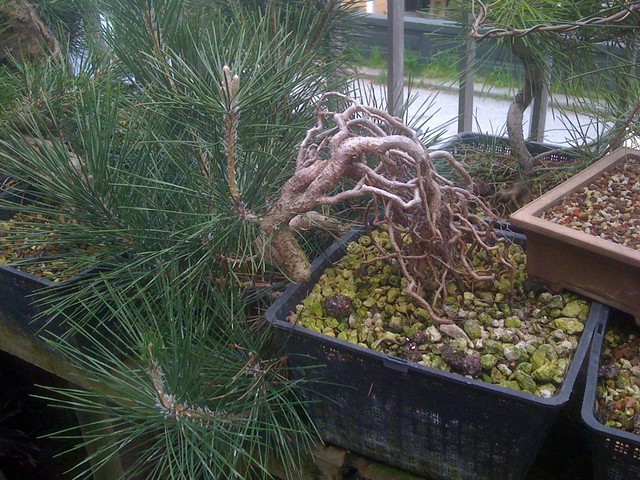
Same tree, opposite side two years later:

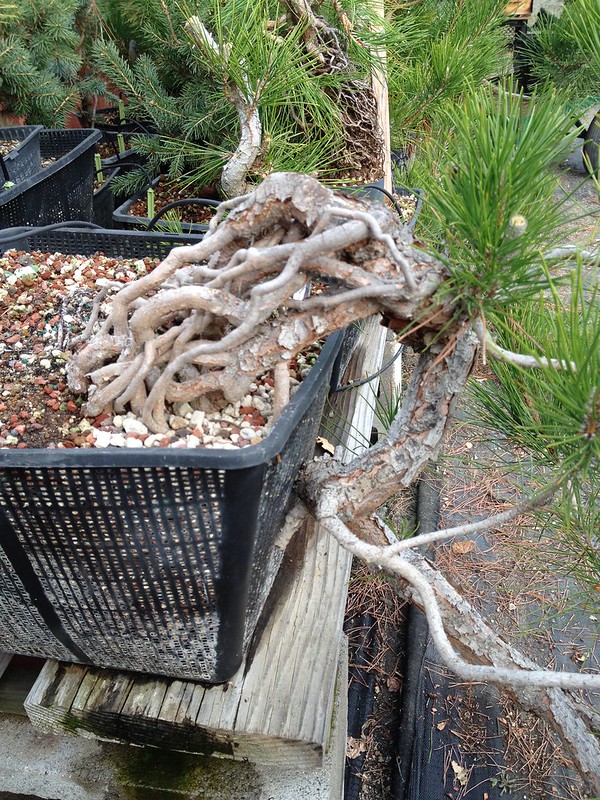
Informal upright - this one had the roots buried so I had to remove some of the soil so they'll start to form bark. This will be one of the larger trees and likely ends up at 16-20" finished height so the trunk will have to fatten for at least 4-5 more years before the lead is removed.
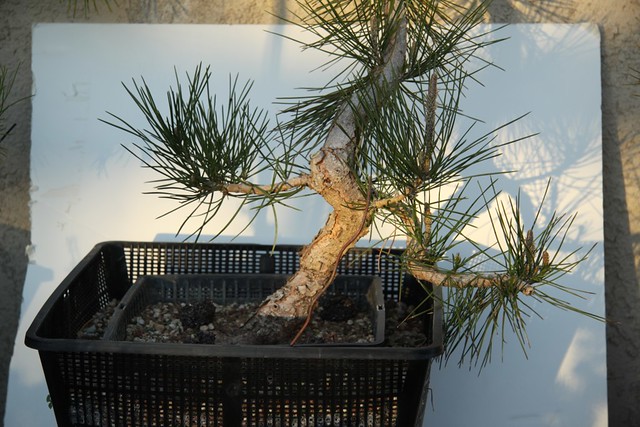


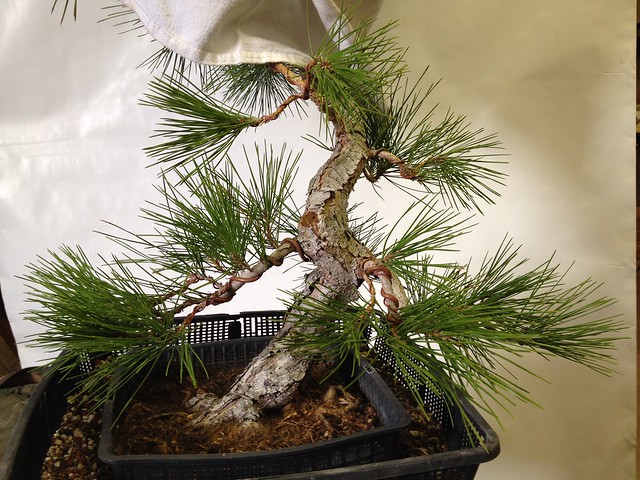

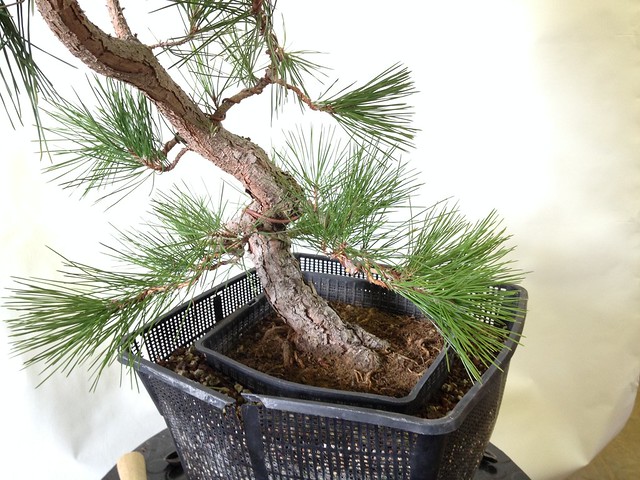
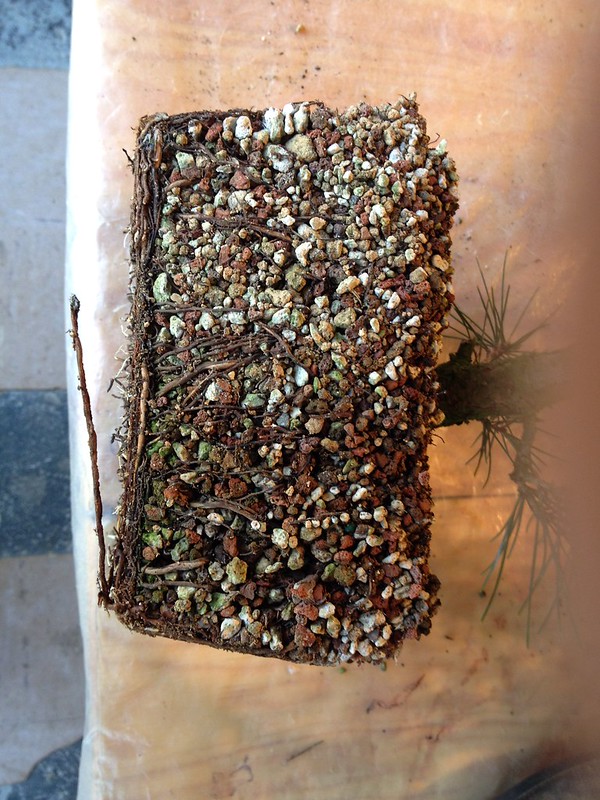
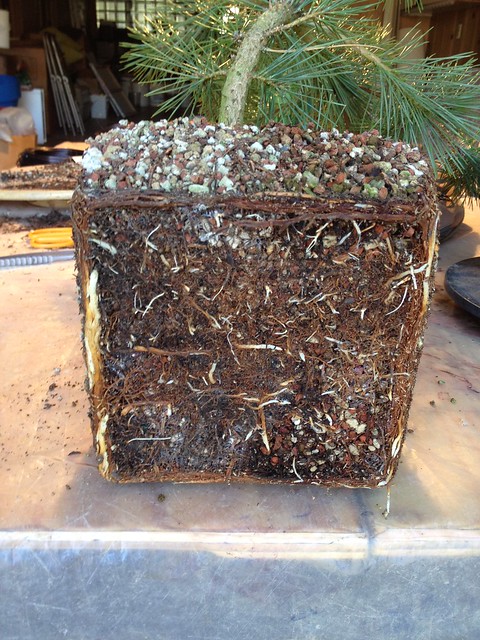

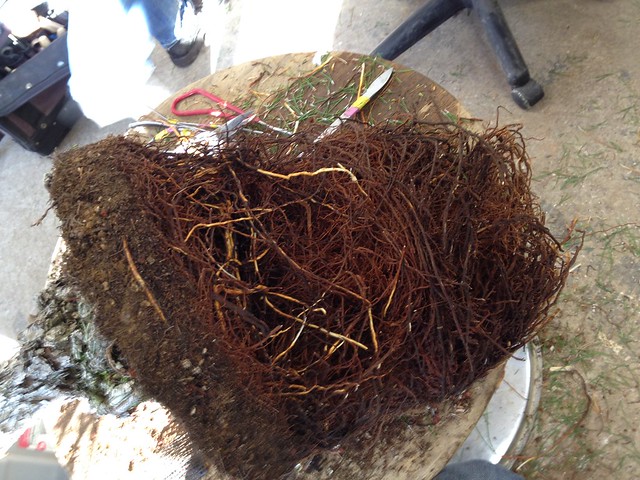
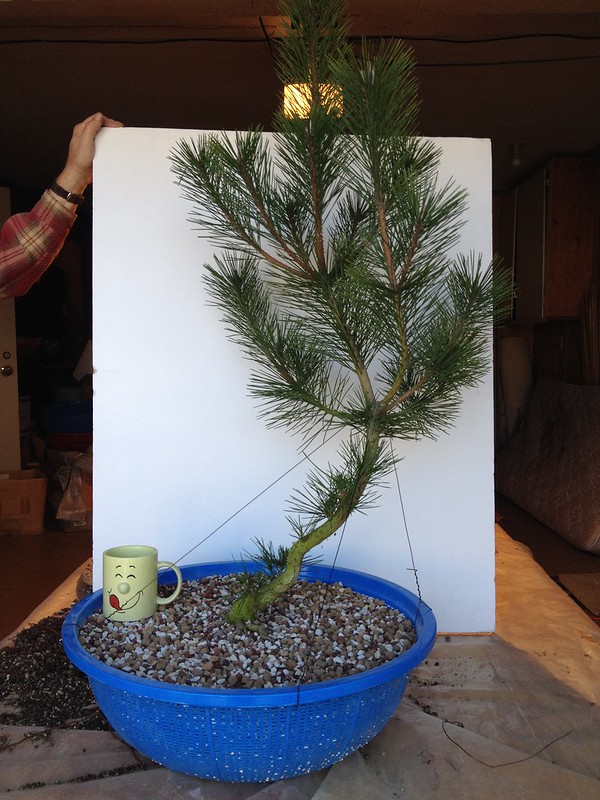

nothing says it like a picture.... thanks for documenting!


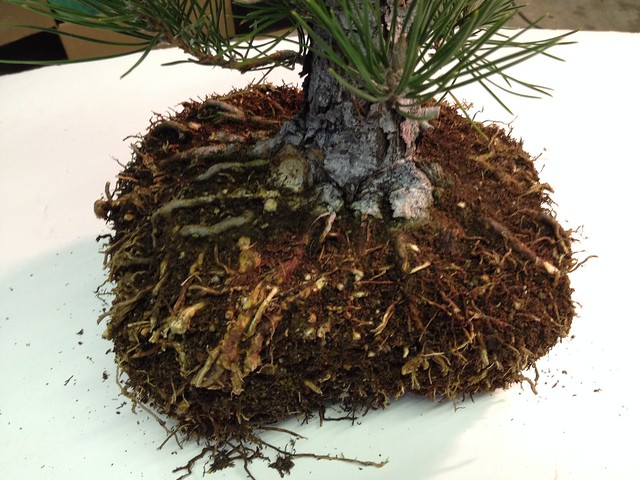
Just out of curiosity, in post 47, you mention that you don't recommend the double colander technique, yet it looks like you're getting amazing results. Would you just recommend slip potting the tree into a larger container every year instead of using two colanders?
On ground growing, I've been growing out a JBP in the ground for the past 3-4 years that was planted on top of a tile. It originally started as a fairly uninteresting tree that was about 3/4" in caliper and about a foot high. It's now close to 12' in height with a 3" trunk, but the base from what I can tell doesn't seem to have the character of the bases that you are getting (nor is the bark as nice). Interestingly, even after combing out the roots radially and planting it on top of a tile, I'm getting a couple of crossing/circling roots. Even with ground growing, I can see leaving the tree in the ground for 10 years to get a decent trunk for a chuhin size tree.
Drew,
They will grow faster in the ground. But the root base will be far inferior. In the ground the roots will run and be straight, in a colander they will run, hit the air and then bud back.
Here is a tree that I repotted recently from the now 8 year old batch. This was grown in a colander, then potted into a larger colander without removing the smaller one. So now, because it's becoming rootbound I've gone in a trimmed the roots back and put it into a new large container:


I've trimmed the large root at left here because this is to be a formal upright and it was too high and too large compared to the rest of the roots. Notice the even, radial root mass. The remaining root ball is almost solid, I was having a difficult time getting in there. In the future the bottom will be reduced more:

The vigor of the trees in the ground can be a problem for the node length as well. If you want to get faster results for a larger tree; finish size 16" high or larger, I would recommend following the technique in BT#20 or the stone lantern pine book, for the first 5 years. Also, take a look at this article I wrote since I recommend a couple changes to the technique:
http://www.bssf.org/project/november-2013-general-meeting-black-pine/
After the seedling is 5 years old, perhaps having been in a large colander for a year already, place the colander on the ground and allow the roots to run from the bottom. Water the top just like it was still on a bench. I would sever the roots every 2 years and likely you may have to repot as well. The results will be faster and you should get good radial root spread since you maintain the smaller roots near the surface in the colander. I should say I haven't actually tried this, but I'm going to with a few of my pines that I want to be much larger than the rest. This also should solve the problem of overly large surface roots from field-grown stock.
Good growing and good luck!
Just ran across this. Interesting back budding Eric. I don't see much evidence of candle pruning.
Frank,
Sorry I didn't see your question earlier. I use a lot of different fertilizers in rotation. Lately its been cakes made from Cottonseed meal, blood meal, bone meal and flour (to make it stick together). I use RO water so I have to add extra nutrients back in. I use Dyna Gro as a baseline nutrient solution in the water but I add fish emulsion at 1/2 strength frequently and lately also kelp extract at 1/2 strength because I've been seeing some mild chlorosis in the maple leaves. Pines like slightly acid so the cottonseed works well. I'm convinced that since I switched to RO last spring that I've been underfertilizing. So, my resolution for the season is to fertilize the crap out of everything and use weekly applications of neem and/or fungicide. Since I have mostly conifers I only have to worry about node length and similar over-fertilizing problems on a dozen or so trees.
Cheers,
Eric
Have you ever had your water tested? You may not even need RO. Take the ppm reading for each nute from the test and incorporate it into your overall formula. There's several free programs out there like hydo-buddy or salt smarts. :2cents:
